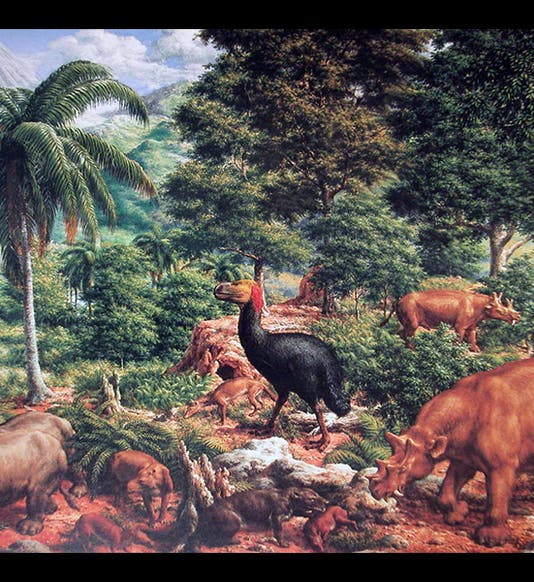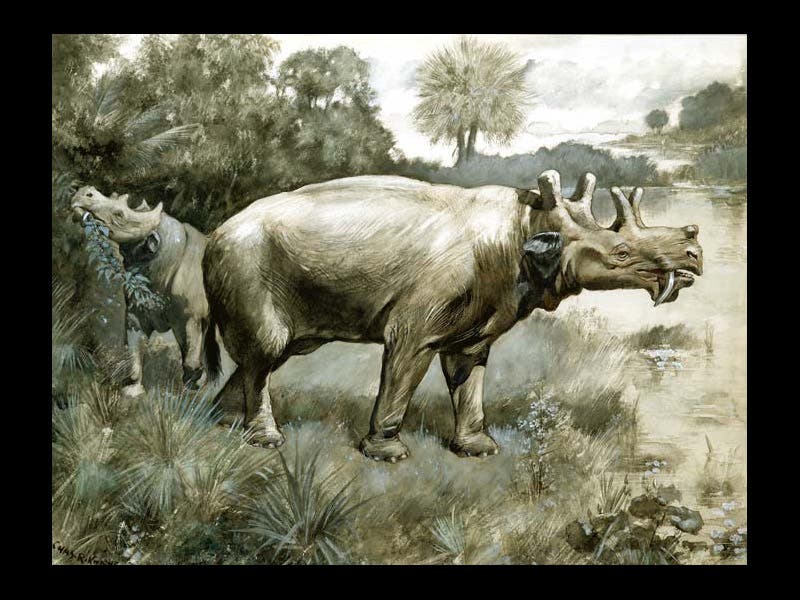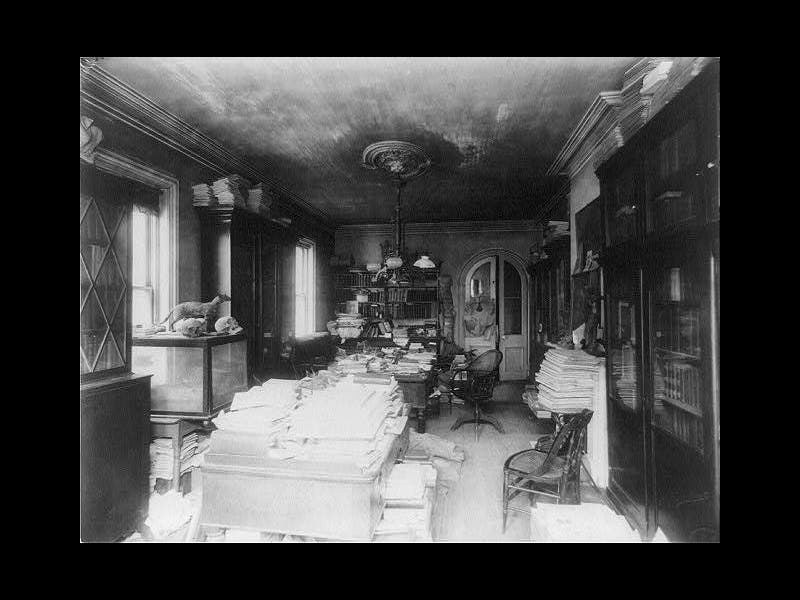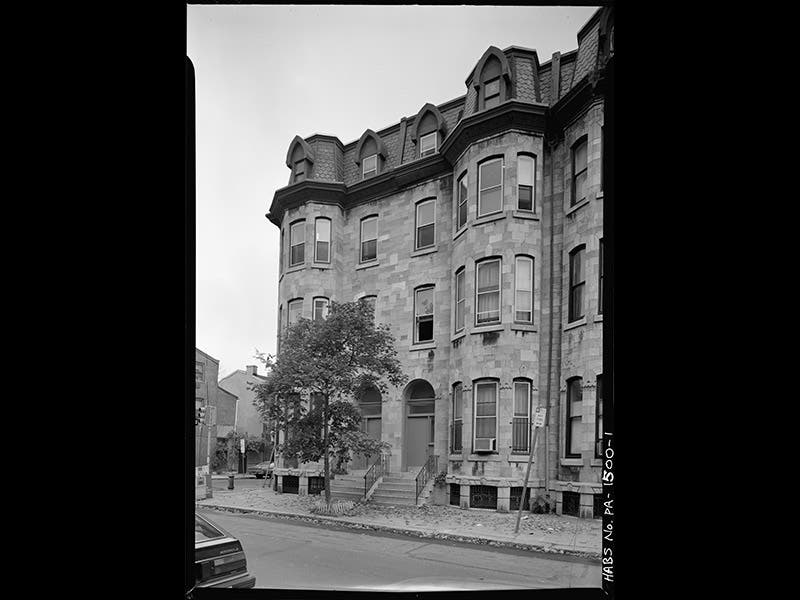Scientist of the Day - Edward Drinker Cope
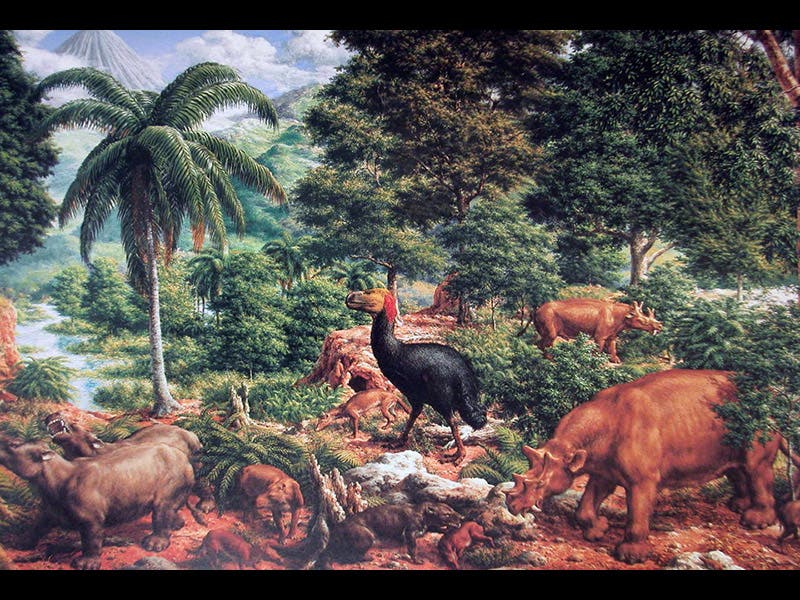
Edward Drinker Cope, an American paleontologist, was born July 28, 1840. Cope worked in Philadelphia, usually in cooperation with the Academy of Natural Sciences, and he was one of the first great vertebrate fossil collectors in the United States, as well as a life-long rival of the other great bone hunter of the period, Othniel Marsh, who taught at Yale. Most short accounts of Cope focus on the "Bone Wars" between Cope and Marsh, and they were pretty spectacular, or on Cope's dinosaur discoveries, but today we will look at another facet of his career, his discovery, description, and naming of extinct American mammals. We begin by showing a detail of Rudolph Zallinger's mural, the Age of Mammals (1967) in the Yale Peabody Museum of Natural History (first image). This section portrays a number of Eocene mammals: a six-horned Uintatherium in the right foreground, a short-legged carnivorous Mesonyx at bottom center, about to dine on an expired Hyracotherium (Eohippus), with a four-horned hippo-like animal, Eobasileus, in the near distance, and a gigantic terror bird, Diatryma, ruling the roost. Bear in mind that this mural is at the museum founded by Marsh and his uncle, George Peabody, where Cope's discoveries and names were decidedly unwelcome. It is startling then to realize that all but one of the animals mentioned and portrayed here were discovered and named by Cope between 1872 and 1875, the exception being the Uintatherium, which was discovered by Cope's mentor, Joseph Leidy. We see another reconstruction of Cope's Eobasileus in a painting by Charles Knight , who knew Cope well (second image).
Cope published his discoveries as fast as he could find them--too fast, in the opinion of some, but otherwise it would have been hard to stay ahead of Marsh and his minions. Cope even bought his own journal, the American Naturalist, in 1878, so he had a ready vehicle for his publications. Cope owned two adjacent rowhouses on Pine Street in Philadelphia, living in one and storing his collections of thousands of fossils in the other. His study, in the second house, was something to behold (third image). The Academy of Natural Sciences thought they were going to get the collection, but Cope had been befriended by Henry Fairfield Osborn at the American Museum of Natural History in New York, and Cope sold most of his specimens to them, beginning in 1894. Cope died in 1897, at the age of 56.
There are many surviving photographs of Cope. We show a carte de visite, in which Cope poses with the skull of Eobasileus (fourth image). The townhouses at 2100-02 Pine Street are a National Historic Landmark (fifth image).
Dr. William B. Ashworth, Jr., Consultant for the History of Science, Linda Hall Library and Associate Professor, Department of History, University of Missouri-Kansas City. Comments or corrections are welcome; please direct to ashworthw@umkc.edu.

